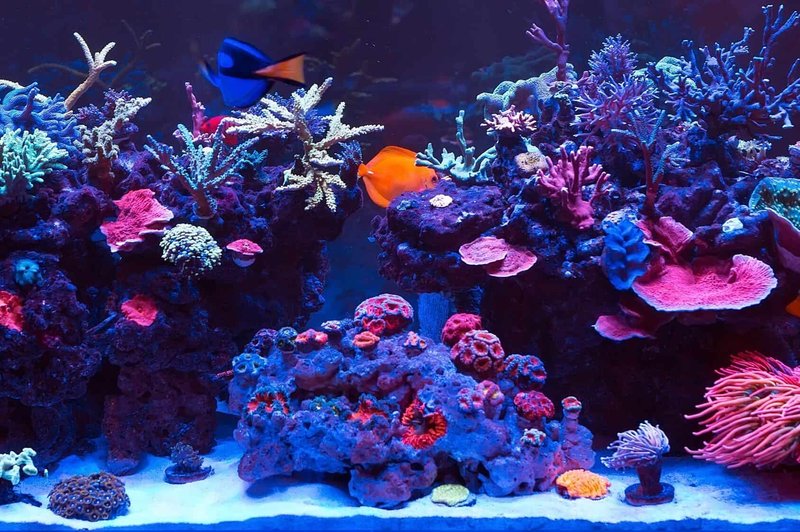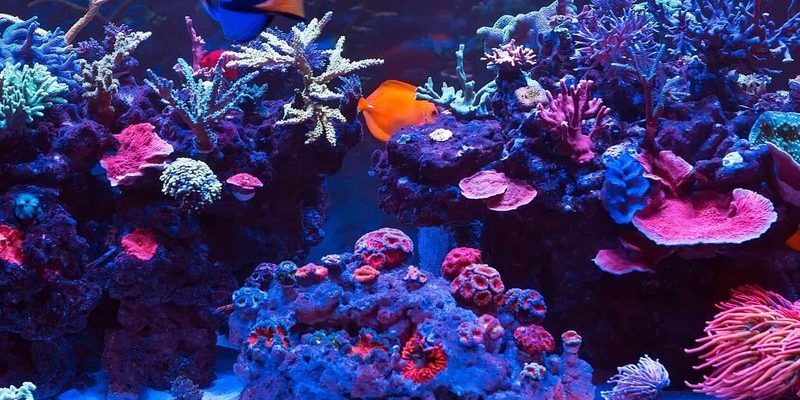
Imagine your tank as a bustling city where every fish is a unique resident. You’d want to choose compatible neighbors to avoid any fishy drama, right? In this guide, we’ll not only highlight some great saltwater fish options but also share tips on how to ensure your tank stays a harmonious place. Whether you’re a newbie or just looking to expand your aquatic community, I’m here to help you navigate these waters.
Understanding Community Tanks
Before we get into specific fish, let’s chat about what community tanks actually are. A community tank is simply a setup where multiple fish species live together in harmony. This benefits both the fish and the aquarium owner, as it creates a more dynamic and visually appealing environment.
When creating a community tank, it’s crucial to consider the size of your tank and the species you want to include. Some fish require more space to swim freely, while others are perfectly happy in tighter quarters. Think of it like hosting a dinner party: you wouldn’t want too many guests in a small space!
Choosing fish that are known for their peaceful nature is essential. Some species are naturally more aggressive, while others are more docile. This is where your research comes in handy. The goal is to create a balanced community where every fish feels safe and comfortable.
Best Saltwater Fish for Community Tanks
Now, let’s dive into some of the best saltwater fish that typically get along well in community tanks. Remember, while these fish are generally known for their peaceful nature, individual personalities can vary.
- Clownfish: These little guys are not just famous from animated films; they’re also fantastic community fish. Clownfish are usually quite friendly and can coexist with a variety of other species. Plus, they have a fun, spunky personality that adds charm to your tank.
- Damselfish: Though some damselfish can be territorial, many varieties are quite peaceful when introduced properly. They come in a range of beautiful colors, making them a vibrant addition to your community tank.
- Royal Gramma: This stunning fish is not only beautiful but also generally peaceful. They prefer hiding spots in the reef, so providing caves and crevices can help them thrive.
- Goby Fish: Gobies are small, playful fish that often get along well with others. They tend to stick to the bottom of the tank and can create a lively environment.
- Firefish: These colorful fish are shy but enjoy being in groups. Firefish are typically good neighbors and do well in community setups.
Each of these fish adds its own flair to your aquarium, but it’s important to keep an eye on their interactions. Just like any community, some days will be smoother than others.
Choosing the Right Tank Size
While picking the right fish is essential, the size of your tank plays a crucial role in ensuring harmony. The more space you have, the better your fish will interact.
Generally, a minimum of 30 gallons is recommended for a community tank. This allows enough room for fish to establish territories without feeling crowded. If you’re planning to keep several species, consider a larger tank to provide ample swimming space.
Here’s the thing: overstocking can lead to stress and aggression among fish. Picture a crowded elevator; it gets uncomfortable, right? Giving your fish room to swim and explore helps keep the peace.
Creating a Peaceful Environment
Once you’ve selected your fish and chosen a tank size, it’s time to create an environment that promotes harmony. This includes both physical and social aspects.
First, decorations are key. Live rock or artificial plants can provide hiding spots for shy fish and break up lines of sight. This makes fish feel more secure and reduces confrontations.
Second, consider the lighting and water conditions. Keeping consistent conditions and a clean tank helps fish feel at ease. Regular water changes, maintaining appropriate salinity levels, and monitoring temperatures all contribute to a peaceful atmosphere.
Lastly, remember that timing matters. When introducing new fish into an established tank, do it gradually. This gives current residents time to adjust and reduces stress. Think of it like introducing a new coworker; easing them in makes the transition smoother.
Monitoring Fish Behavior
Once your community tank is up and running, it’s important to keep an eye on your fish. Monitoring their behavior can help you spot any potential issues early on.
If you notice chasing or fin nipping, it could indicate that your tank is overcrowded or that certain species are not compatible. In such cases, consider adjusting your fish population or restructuring the tank.
Reacting quickly can prevent minor spats from escalating into serious conflicts. Just like in any community, communication between residents (or fish) is vital for maintaining a peaceful environment.
Common Mistakes to Avoid
Every aquarist makes mistakes, especially when starting out. Here are a few common pitfalls to steer clear of to ensure your community tank remains harmonious:
- Overstocking: Adding too many fish at once can lead to aggression and stress. Remember, less is often more!
- Ignoring Compatibility: Some fish might look good together, but not all species are compatible. This can lead to aggressive behavior. Always research before adding new fish.
- Neglecting Tank Maintenance: Keeping your tank clean and parameters stable is essential. A dirty tank can stress fish and lead to disputes.
- Skipping Acclimation: Fish need time to adjust to their new environment. Rushing this process can cause shock, leading to health issues or aggressive behavior.
By avoiding these traps, you’ll create a much more enjoyable experience for both you and your fish.
Creating a peaceful community tank with saltwater fish is an exciting journey filled with color and life. By choosing the right fish, providing ample space, and maintaining a clean environment, you can create a delightful underwater world where diverse species thrive together.
Remember, it’s all about balance. Just like in any good community, keeping harmony among your aquatic friends takes effort and intention. With the right knowledge and a bit of patience, you’ll soon have a thriving aquarium filled with happy fish. Enjoy the process, and happy fishkeeping!

